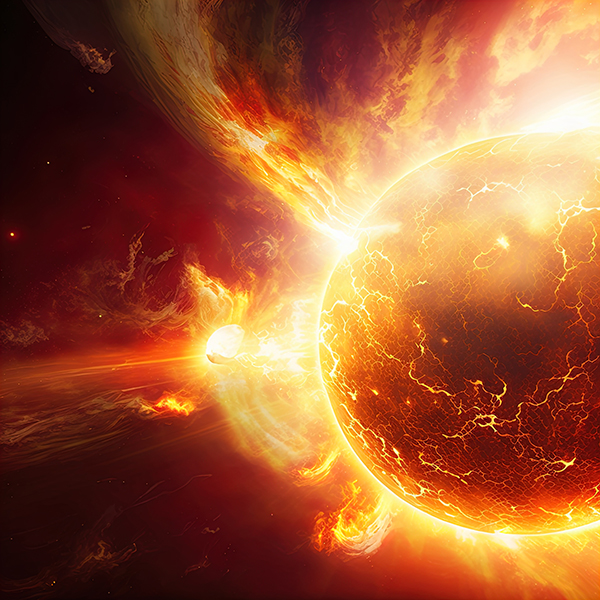
- Solar superflares are extreme solar eruptions with energy output that is billions of times greater than atomic bombs.
- Recent research suggests superflares occur roughly once every 100 years, more frequently than previously thought.
- A superflare striking Earth could devastate modern infrastructure, causing widespread power outages and satellite failures.
- Technology reliance makes society uniquely vulnerable to solar storms, with no current defenses against superflares.
- The sun’s unpredictable behavior serves as a reminder of nature’s power and the need for preparedness.
Imagine a force of nature so powerful it could unleash more energy than billions of atomic bombs in a single burst. This isn’t science fiction—it’s a real phenomenon known as a solar superflare, and scientists now believe Earth is overdue for one. A superflare could dwarf even the most severe solar storms in recorded history, threatening the very infrastructure we rely on every day.
What is a solar superflare?
A solar superflare is an extreme eruption of energy from the sun, far more powerful than the typical solar flares we’ve observed. These events release staggering amounts of energy—one octillion joules, or a number followed by 27 zeros. To put that into perspective, the infamous Carrington Event of 1859, which caused telegraph systems to fail worldwide, was just 1% as powerful as a superflare.
Superflares are not just rare anomalies; they’re part of the sun’s natural behavior. Recent research, based on observations of more than 56,400 sun-like stars, suggests that superflares occur roughly once every 100 years. This is far more frequent than previously thought, where estimates ranged from once every 1,000 to 10,000 years. With this new data, scientists warn that Earth could be on the brink of experiencing a catastrophic superflare.
The potential devastation
If a superflare were to strike Earth today, the consequences would be devastating. Modern society’s reliance on technology makes us uniquely vulnerable to such an event. A superflare could overload power grids, knocking out electricity for millions or even billions of people. Satellites, which underpin everything from GPS navigation to global communication networks, could be knocked out of orbit or rendered useless. Aircraft could be grounded, and the internet could be disrupted on a global scale.
The economic cost of such an event would be astronomical. In 1989, a geomagnetic storm caused a nine-hour blackout in Quebec, and in 2003, a solar flare knocked out power in Sweden for an hour. A superflare, however, would be on an entirely different scale, potentially causing trillions of dollars in damage and leaving entire regions without power for weeks or months.
Technology is a double-edged sword
While technology has brought countless benefits to our lives, it has also made us more vulnerable to solar storms and other problems. Satellites, power grids, and communication networks are all susceptible to the intense radiation and charged particles emitted during a superflare. The very systems that connect and power our world could become conduits for destruction.
This vulnerability is compounded by the fact that we have yet to develop effective defenses against such events. While the European Space Agency plans to launch a satellite in 2031 to provide early warnings of solar storms, we currently lack the ability to shield our infrastructure from the full force of a superflare.
A stark reminder of nature’s power
The sun’s behavior is unpredictable, and while it may seem peaceful most of the time, it has the potential to unleash catastrophic energy. The new research serves as a stark reminder that even the most extreme solar events are part of the sun’s natural repertoire. As we continue to rely on technology for our daily lives, we must also prepare for the possibility of a superflare—a force of nature that could test the limits of our modern world.
The question remains: Are we ready for the sun’s next tantrum? The answer could determine the resilience of our civilization in the face of one of nature’s most powerful forces.
Sources for this article include:
Please contact us for more information.



















